Gallery Network
Spotlight: See How British-Trinidadian Artist Zak Ové Finds Freedom in Reimagining the Histories of Carnival and Textile Craft
The artist's solo exhibition "Canboulay" is currently on view at De Buck Gallery in New York.
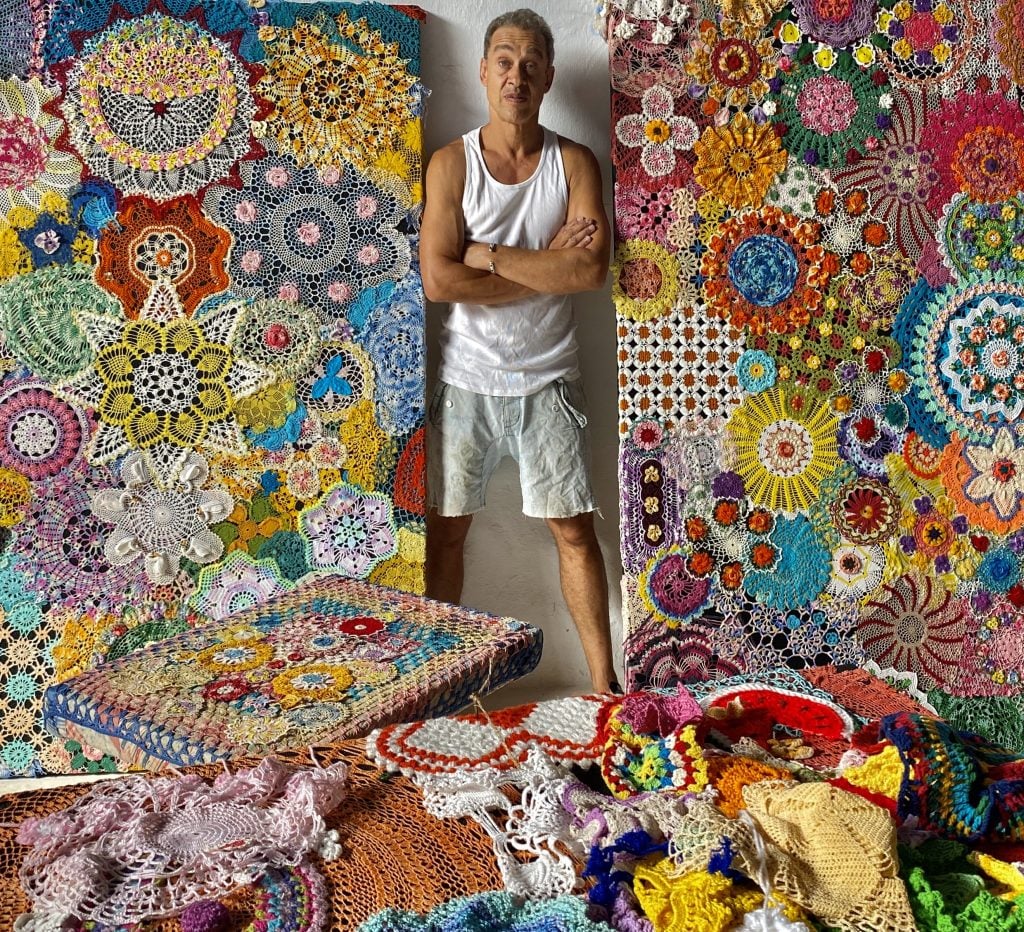
The artist's solo exhibition "Canboulay" is currently on view at De Buck Gallery in New York.

Artnet Gallery Network

Every month, hundreds of galleries add newly available works by thousands of artists to the Artnet Gallery Network—and every week, we shine a spotlight on one artist you should know. Check out what we have in store, and inquire for more with one simple click.
What You Need to Know: British-Trinidadian visual artist Zak Ové recently opened his first solo exhibition, “Canboulay,” at New York’s De Buck Gallery. The artist’s brilliantly colorful recent works are rooted in the Trinidadian carnival, with its melded African diasporic and European histories. The artist’s most recent works combine crocheted doilies the artist weaves together into mixed-media textile canvases. The works—and the materials—are inspired by the artist’s memories of the festival of Canboulay, a traditional precursor to carnival in Trinidad and Tobago.
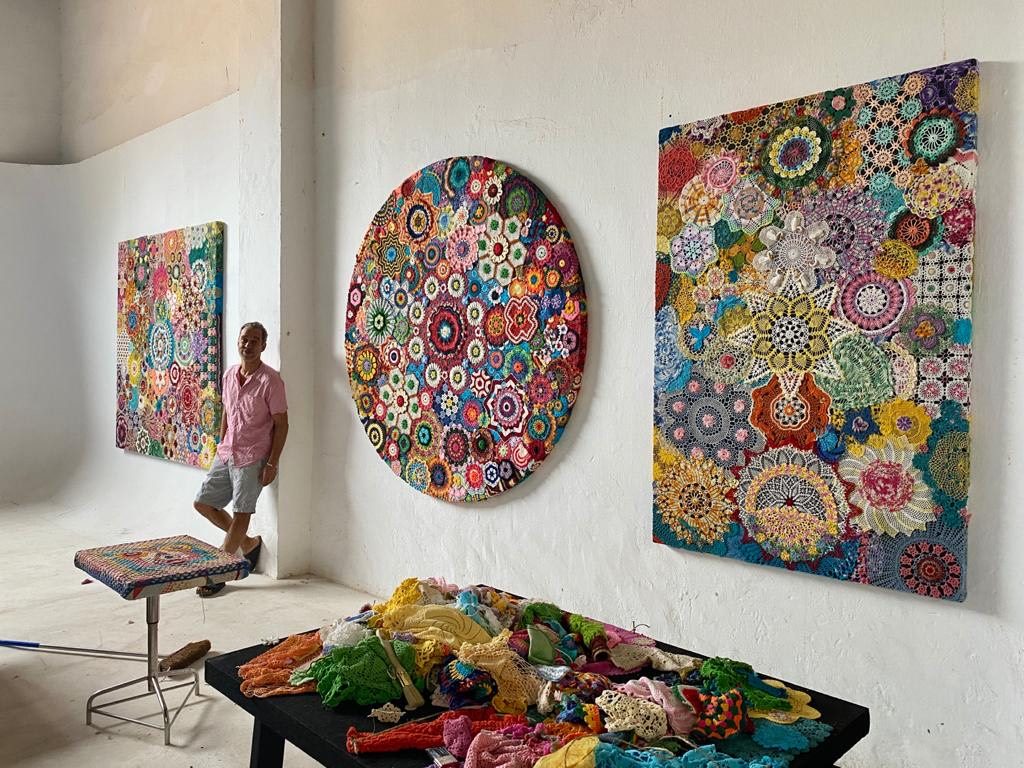
Zak Ové in his studio, 2021. Courtesy of the artist.
Why We Like It: Ové’s works focus on traditions of masquerade as a tool of self-emancipation, navigating a space between an imagined future and a fantastical past. The celebration of Canboulay originated in a harvest festival in which the traditions of dancing, chanting, and music of the festival ultimately birthed calypso music. The layered and colorful works in the exhibition reference the names of traditional folklore characters: Blue Devil, Pierrot Grenade, and Baby Doll. The festival’s musicality can be felt in these works as well, as Ové layers and weaves together both found and collected doilies in radiating patterns. The resulting colorful abstractions possess a pulsating, lifelike quality. These works are homages, too. Ové celebrates the women who have crafted these detailed objects across centuries and continents, as well as harkening to his own childhood memories of discovering textile and fibers at his family’s dress shop.
According to the Artist: “I have a real love for doilies and for crochet and I think it comes from my childhood memories of being at my grandmother’s. Doilies were always used in the special rooms that we were never allowed in. It was very much an upwardly mobile sense of embetterment for a lower-middle-class family in the Caribbean to feel that they were coming up in the world… I became interested in a sort of ‘Granny Psychedelia’ that was taking place—that these doilies were often made by repressed women through the 1970s and 1980s in Catholic family homes across South America, across Eastern Europe, across Africa. And what I liked was the way suddenly these sort of fluorescent bright colors would appear in the landscape of the home, to break that repression and give them a sense of freedom. When amassed, when you see hundreds of these things together it becomes almost like a coral reef but it sings of that experience in volume like a choir.”
Browse the artist’s work below.
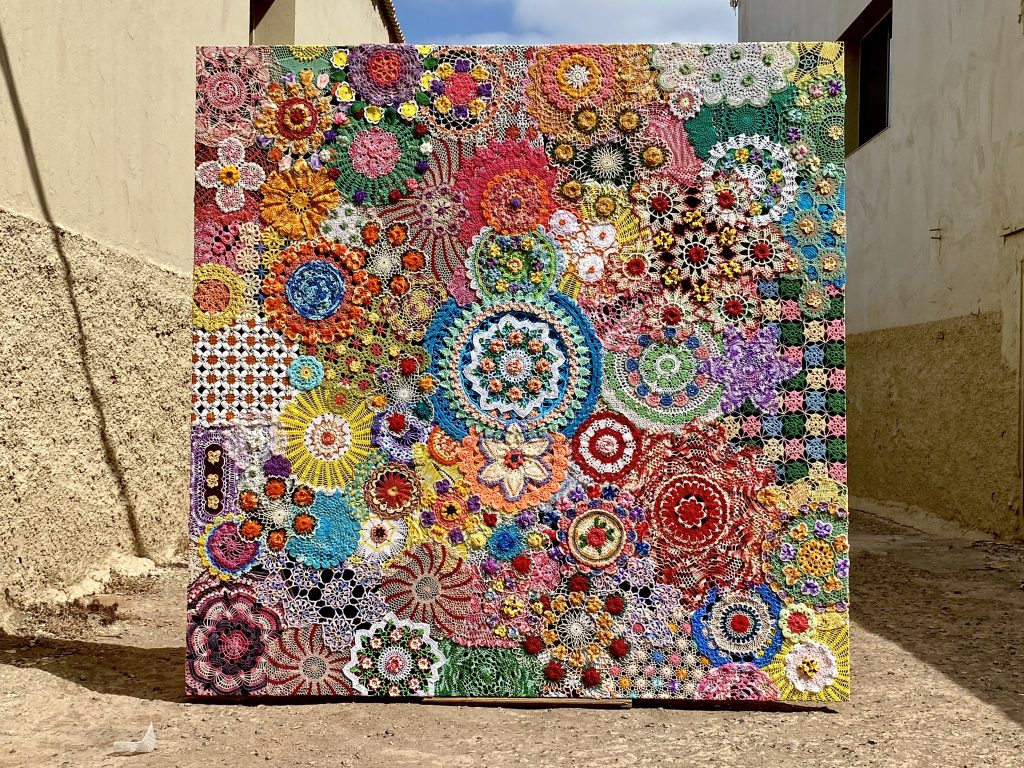
Zak Ové, Burrokeet (2021). Courtesy of the artist and De Buck Gallery.
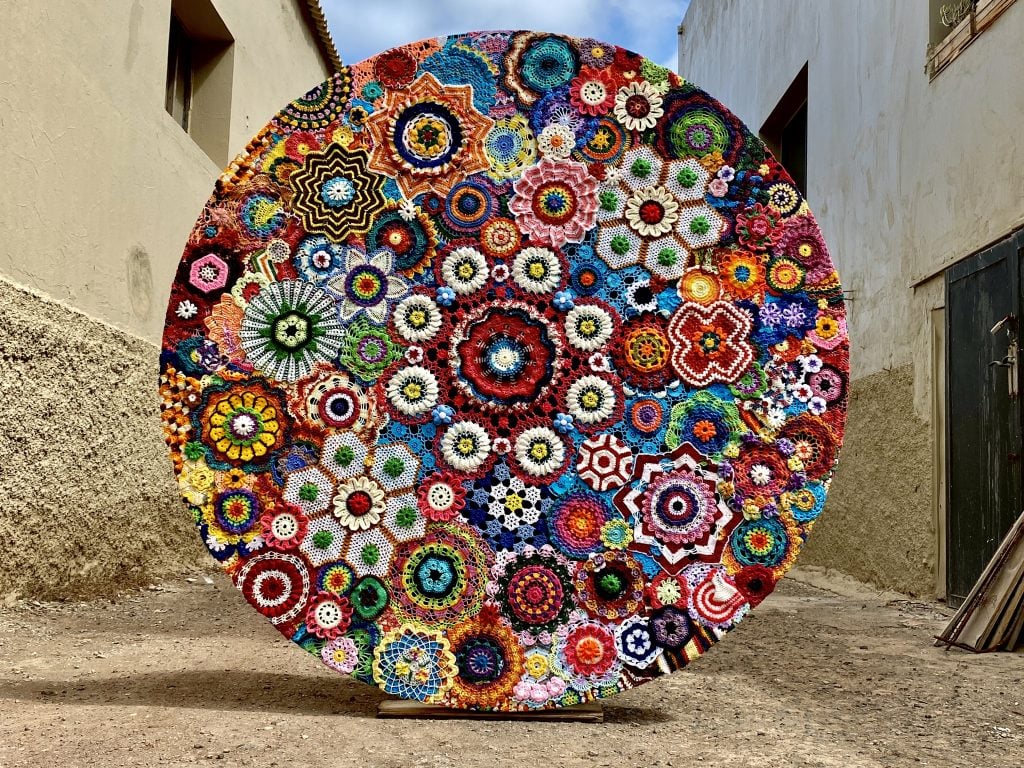
Zak Ové, Fancy Sailor (2021). Courtesy of the artist and De Buck Gallery.
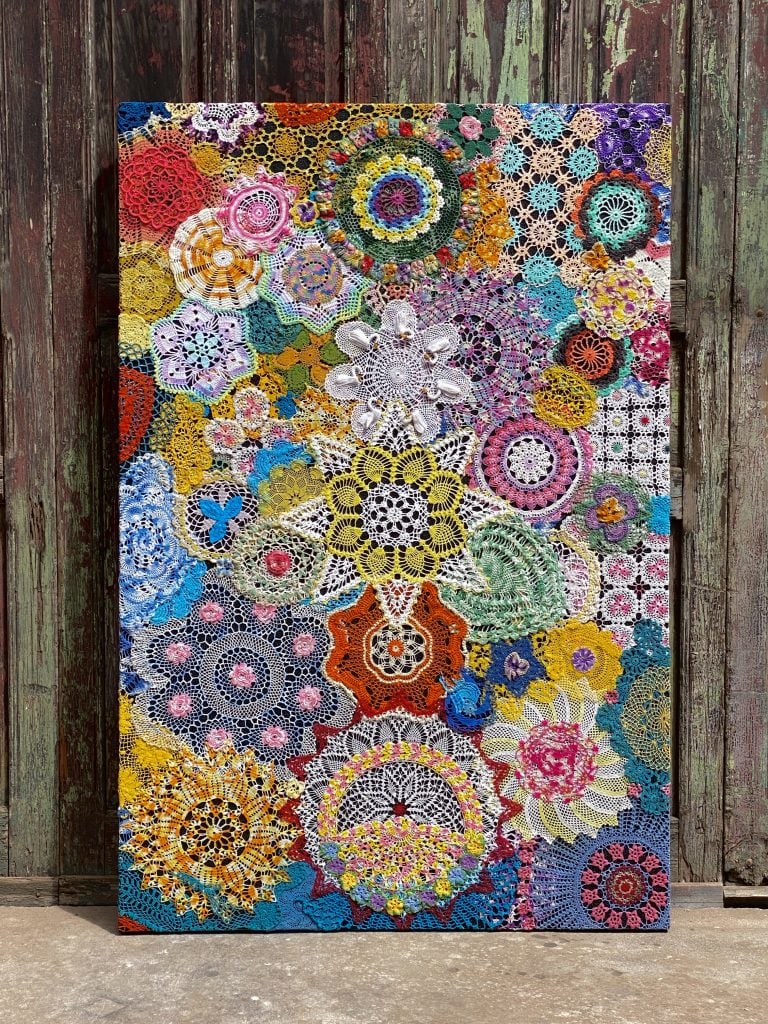
Zak Ové, Dame Lorraine (2021). Courtesy of the artist and De Buck Gallery.
“Zak Ové: Canboulay” is on view at De Buck Gallery through November 20, 2021.